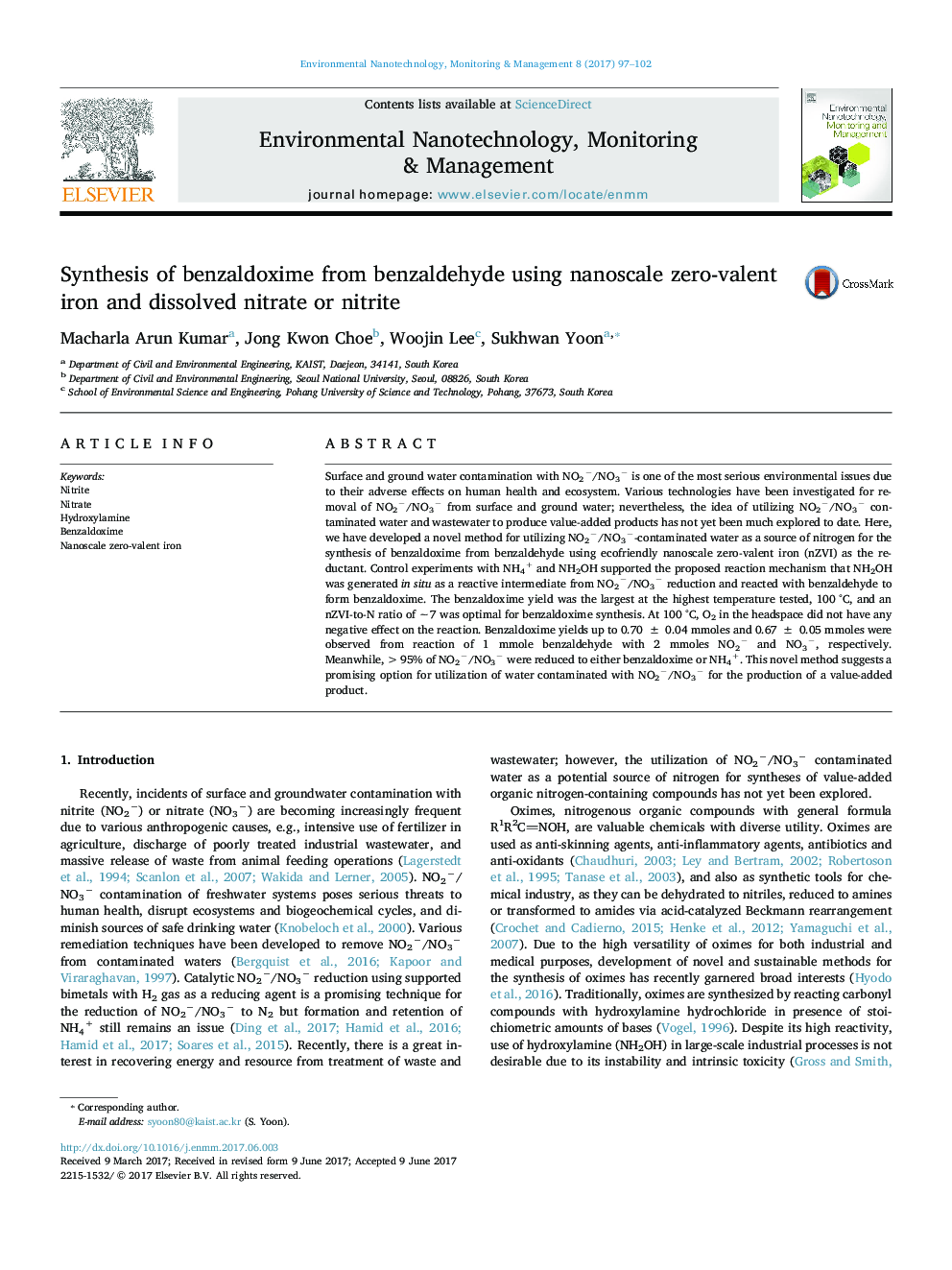| Article ID | Journal | Published Year | Pages | File Type |
|---|---|---|---|---|
| 5748490 | Environmental Nanotechnology, Monitoring & Management | 2017 | 6 Pages |
â¢A method for benzaldoxime synthesis with NO2â/NO3â-contaminated water using nZVI.â¢NH2OH formed as an intermediate reacted with benzaldehyde to form benzaldoxime.â¢Higher yield of benzaldoxime was achieved at elevated temperatures.â¢Determination of optimal nZVI-to-N ratio is crucial for benzaldoxime synthesis.â¢An attractive environmentally-friendly alternative for synthesis of oximes.
Surface and ground water contamination with NO2â/NO3â is one of the most serious environmental issues due to their adverse effects on human health and ecosystem. Various technologies have been investigated for removal of NO2â/NO3â from surface and ground water; nevertheless, the idea of utilizing NO2â/NO3â contaminated water and wastewater to produce value-added products has not yet been much explored to date. Here, we have developed a novel method for utilizing NO2â/NO3â-contaminated water as a source of nitrogen for the synthesis of benzaldoxime from benzaldehyde using ecofriendly nanoscale zero-valent iron (nZVI) as the reductant. Control experiments with NH4+ and NH2OH supported the proposed reaction mechanism that NH2OH was generated in situ as a reactive intermediate from NO2â/NO3â reduction and reacted with benzaldehyde to form benzaldoxime. The benzaldoxime yield was the largest at the highest temperature tested, 100 °C, and an nZVI-to-N ratio of â¼7 was optimal for benzaldoxime synthesis. At 100 °C, O2 in the headspace did not have any negative effect on the reaction. Benzaldoxime yields up to 0.70 ± 0.04 mmoles and 0.67 ± 0.05 mmoles were observed from reaction of 1 mmole benzaldehyde with 2 mmoles NO2â and NO3â, respectively. Meanwhile, >95% of NO2â/NO3â were reduced to either benzaldoxime or NH4+. This novel method suggests a promising option for utilization of water contaminated with NO2â/NO3â for the production of a value-added product.
Graphical abstractDownload high-res image (57KB)Download full-size image
